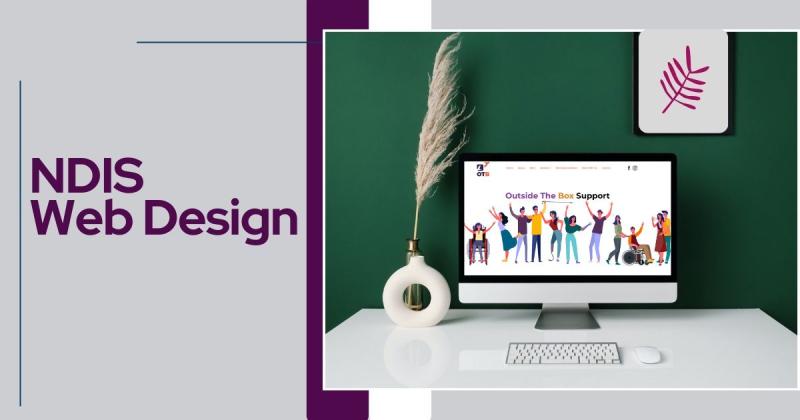NDIS Web Design: Creating Accessible Websites for the Disability Community

The National Disability Insurance Scheme (NDIS) has significantly improved the lives of Australians with disabilities. It provides support and funding to help people with disabilities live more independent lives. As part of the NDIS, service providers, businesses, and organisations must ensure they are accessible to everyone, including people with disabilities. One of the best ways to make your business or service accessible is through an NDIS-friendly website design.
In this blog, we'll explore what NDIS web design is, why it's important, and how you can create a website that meets the needs of people with disabilities.
What is NDIS Web Design?
NDIS Web Design means making websites that are easy for everyone, including people with disabilities, to use. The NDIS (National Disability Insurance Scheme) helps people with disabilities in Australia, and NDIS Web Design focuses on creating websites that are accessible to them.
This includes making sure people with visual, hearing, or movement challenges can use the website easily. For example, adding text to describe images for those who can’t see them, allowing the website to be navigated using just a keyboard, and making sure it works with tools like screen readers.
The goal of NDIS Web Design is to make sure that everyone, no matter their abilities, can access and use the website without difficulty. It's about making websites inclusive and welcoming for all.
Why is NDIS Web Design Important?
For many people with disabilities, the Internet is the main way to find information and support. If your website is hard to use, you may be leaving out people who need your help. It could also cause legal problems if your website doesn’t follow accessibility rules.
Here’s why NDIS Web Design is important:
Inclusive Service for Everyone: Your website should be easy for everyone to use, whether they are blind, deaf, or have physical disabilities. This makes sure everyone is included.
Better User Experience: Making your website simple and clear helps everyone use it more easily, no matter their ability.
Legal Compliance: Many countries have rules saying websites must be accessible. In Australia, the law says websites must work for people with disabilities.
Reaching More Customers: A website that works well for people with disabilities means you can reach more people and grow your business.
Key Features of NDIS Web Design
Here are some important things to consider when designing an NDIS-friendly website:
Clear and Simple Navigation: Make sure your website is easy to use. Use simple menus, and clear headings, and make important information like contact details or services easy to find. This helps users with cognitive disabilities.
Alternative Text for Images: Add alternative text (alt text) for all images. This helps people who are blind or visually impaired by describing images through screen readers.
Text-to-Speech Features: Consider adding a text-to-speech option. This allows users with visual impairments to listen to your content, making it easier to access.
Keyboard Navigation: Make sure users can navigate your website entirely using a keyboard. Some people with physical disabilities rely on keyboards instead of a mouse, so they need to be able to use all the features on your site.
Accessible Forms: Make sure that forms are easy to fill out, clear, and accessible. Labels and error messages should be easy to understand, and forms should work well with screen readers.
High Contrast and Readable Fonts: Use high-contrast colours to make text easy to read. Avoid tiny fonts, and make sure your text is large enough to see clearly, especially for users with visual impairments.
Responsive Design: Make sure your website works well on different screen sizes and is mobile-friendly. This is especially helpful for people with limited mobility who may prefer using mobile devices.
How to Make Your Website NDIS-Friendly
Check for Accessibility Issues: Start by checking your website for any problems. Tools like Google Lighthouse or WAVE can help you find areas that need improvement.
Follow WCAG Guidelines: The Web Content Accessibility Guidelines (WCAG) provide clear rules for making websites easier to use. Learning these guidelines will help you create a more accessible site.
Test with Real Users: If you can, ask people with disabilities to test your website. Their feedback will show you how easy it is to use and where you can make improvements.
Hire a Professional: If you're not sure how to make your website accessible, think about hiring a professional web designer. They can help ensure your website meets accessibility standards.
Conclusion
Making your website NDIS-friendly is more than just following the law. It’s about ensuring everyone can access your services. Whether you’re a service provider or a business, creating an accessible website helps you support the disability community and welcomes all users.

Comments